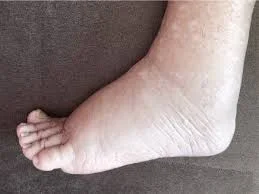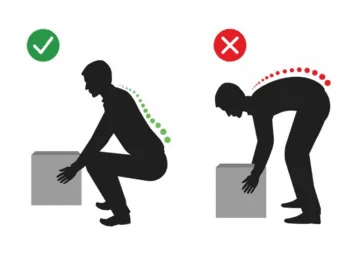How to Get Rid of Neck Fat?
Excess fat around the neck region is more than just a cosmetic concern; it can contribute to a host of physical and health issues. Gaining a comprehensive understanding of neck fat, its causes, effects, and how it’s stored and burned in the body, is a crucial first step towards addressing it.
Adjusting your diet and nutrition can make a massive difference; from tweaking your calorie intake to incorporating fat-burning foods, the right eating habits can aid your journey to a slender neck. But food alone can’t do the trick, staying physically active, adopting specific exercises tailored towards the neck and upper body muscles, and engaging in other forms of physical activities can expedite the process of losing that stubborn neck fat.
Table of Contents
Understanding Neck Fat
Understanding the Causes of Neck Fat
One of the main causes of neck fat, also referred to as a “double chin”, is weight gain. Typically, when a person increases their body fat intake, the neck is one of the many areas where the excess fat is stored. Aging is another factor that leads to neck fat. As we age, our skin loses its elasticity, causing it to sag which can present the appearance of neck fat. Genetics can also play a role in neck fat development. If your relatives have double chins, you might be more likely to have one.
Effects of Neck Fat
Having a substantial amount of neck fat can lead to several negative effects. Primarily, it impacts one’s self-image and self-confidence, making them feel self-conscious about their appearance. In terms of health effects, excess neck fat might be a sign of obesity, which can lead to more serious conditions such as diabetes, heart conditions, and high blood pressure.
Understanding Neck Physiology and Fat Storage
Breaking down the physiology of the neck, it comprises multiple sets of muscles, including the sternocleidomastoid and platysma. These muscles are covered by a layer of fat that typically increases with the overall fat percentage in your body. Human fat cells, or adipocytes, have an innate capacity to store lipids. When the body takes in more calories than it can burn, it stores it as fat for later use. The location of these adipocytes varies from person to person, but for some people, the neck seems to be a preferred area for fat storage.
Fat Burning Process in the Body
The process of burning fat in the body is known as lipolysis. This is a metabolic process where the body’s lipids break down into smaller molecules, which can then be oxidized to produce energy. Hormones such as insulin, glucagon, epinephrine, and norepinephrine play a significant role in the process of lipolysis.
When you’re in a state of caloric deficit (you burn more calories than you consume), your body needs to look for an alternative fuel source, which is often the stored fat. As fat gets used for energy, fat cells shrink, leading to a reduction in total body fat, including neck fat.
It’s important to note, however, that targeted fat loss (also known as “spot reduction”) is a common misconception. While you can target specific muscle groups with strength training exercises, you cannot target where your body burns fat. This process is largely influenced by genetics and personal physiology. Therefore, to get rid of neck fat, a comprehensive approach including diet, exercise, and potentially, specific posture and face exercises is required.
Diet and Nutrition
Role of Balance Diet in Weight Loss
Weight loss is significantly influenced by dietary habits. In essence, weight loss happens when calorie expenditure exceeds calorie intake. Calories are the units of energy you obtain from foods and beverages. When you consume fewer calories than your body needs for daily activities and physical exercise, you create a calorie deficit, which leads to weight loss.
When you take in more calories than your body can burn, the excess calories get stored as fat. This fat can appear anywhere in your body, including the neck area. Understanding this connection can empower you to make mindful eating choices to help reduce neck fat.
Concept of Calorie Intake Versus Calorie Expenditure
Your caloric intake comprises the total number of calories you consume through meals and snacks in a day. Caloric expenditure, on the other hand, is the total number of calories your body burns in a day. This includes calories burnt through metabolic processes, physical activity, and exercise.
To lose weight, your caloric expenditure should surpass your caloric intake, creating a calorie deficit. The greater the calorie deficit, the more weight you’ll lose. It’s important to strike a healthy balance, though, as excessive calorie restriction can lead to malnutrition or other health problems.
Nutrients and Foods That Help Burn Fat
Certain nutrients have been associated with improved fat burning. Protein, for instance, can boost metabolism, reduce appetite, and stimulate fat-burning hormones. Foods rich in protein include lean meats, fish, eggs, dairy products, and legumes.
Fiber-rich foods can also promote fat burning by increasing satiety, reducing food intake, and improving gut health. Good sources of diet which are high in fiber include fruits, vegetables, whole grains, and legumes.
Choosing foods with a low-energy density, such as fruits and vegetables, can also help with weight loss. These foods provide fewer calories than their weight, allowing you to eat larger, more satisfying portions without consuming too many calories.
Managing Your Eating Habits to Get Rid of Neck Fat
To manage your eating habits for neck fat reduction, follow these tips:
- Avoid consuming excess calories: Focus on filling your diet with nutrient-dense, low-calorie foods like fruits, vegetables, whole grains, and lean proteins.
- Be mindful of portion sizes: Overeating healthy food can still lead to weight gain. Use measuring cups or a food scale to ensure you’re not consuming more than you need.
- Mind your meal times: Eating on a regular schedule can help prevent overeating and keep your metabolism humming.
- Limit processed foods and sugar: These often contain hidden calories and can lead to weight gain, including in the neck area.
- Hydrate adequately: Drinking enough water helps boost metabolism and can help curb overeating.
- By mastering the principles of calorie intake versus expenditure, understanding how to diet effectively, and recognizing key nutrients and foods that promote fat burning, you can effectively manage and reduce neck fat over time.
Exercise and Physical Activity
The Importance of Overall Body Fitness in Reducing Neck Fat
Finding ways to get rid of neck fat often begins with understanding the need for overall body fitness. Holistic body exercises can significantly aid in reducing the amount of fat accumulated around the neck and upper body, not just from an aesthetic standpoint but for health reasons as well. Regular cardiovascular exercises boost metabolism, which in turn accelerates fat-burning processes throughout the body, including the neck area. Exercise, combined with balanced nutrition, can help you achieve a leaner physique overall, consequently reducing excess neck fat.
Toning Neck and Upper Body Muscles
Exercises that specifically target the neck and upper body muscles can be very effective in eliminating excess neck fat. Neck tilt exercises, for instance, can be performed by tilting your head backward while seated or standing and trying to touch the roof of the mouth with your tongue. This exercise can be repeated multiple times and offers significant benefits in toning neck muscles.
Similarly, neck rotations involving slow and steady clockwise and anticlockwise movements of your neck can also help stretch these muscles, facilitating fat loss. For effective upper body toning, exercises such as push-ups, dumbbell rows, and pull-ups can be incorporated into your routine. These movements engage multiple muscle groups and help in achieving a toned upper body, thereby reducing fat around the neck.
Here are some examples of neck-specific exercises:
- Neck rolls: Sit or stand with your shoulders relaxed. Slowly roll your head in a circle, keeping your chin up and back straight. Do 10-15 rotations in each direction.
- Chin lifts: Sit or stand with your shoulders relaxed. Slowly tilt your head back so that you are looking at the ceiling. Now, Gradually lift your chin up. Hold for 5 seconds and then slowly lower your head back down. Repeat 10-15 times.
- Fish lips: Pucker your lips like you are about to kiss a fish. Hold for 5 seconds and then relax. Repeat 10-15 times.
- You can do these exercises at home or at the gym. Be sure to start slowly and gradually increase the intensity and duration as you get stronger.
It is important to note that there is no spot reduction of fat. However, by following a healthy diet and exercising regularly, you can lose weight overall and reduce neck fat. To Know the 36 Best Exercises for Weight Loss at Home Click on the Link.
Incorporating Other Forms of Physical Activities
Incorporating a diverse range of physical activities into your daily life can also assist in reducing neck fat. Yoga, for example, offers a myriad of poses that can help you stretch, tone, and strengthen your neck muscles. Certain poses like the cobra pose, bridge pose, and fish pose are particularly effective as they exert pressure on the neck, helping to reduce excess fat.
Other forms of physical activities such as everyday chores can also contribute. Activities like gardening, walking the dog, cleaning the house, or simply taking stairs instead of elevators can aid in burning calories and reducing overall body fat. This passive form of exercising, known as Non-Exercise Activity Thermogenesis (NEAT), can also contribute significantly to getting rid of neck fat.
Life’s daily chores can surprisingly, yet effectively, become a means of reducing neck fat. In the bid to eliminate neck fat, it’s essential to remember that it’s a journey that involves a combination of knowledge about your body, the right nutrition, and consistent, effective exercises. By understanding the causes and effects of neck fat and implementing proper diet and physical activity, you can not only rid yourself of neck fat but also improve your overall wellness and self-esteem. It’s time to bid goodbye to neck fat and hello to a healthier, more confident you.







